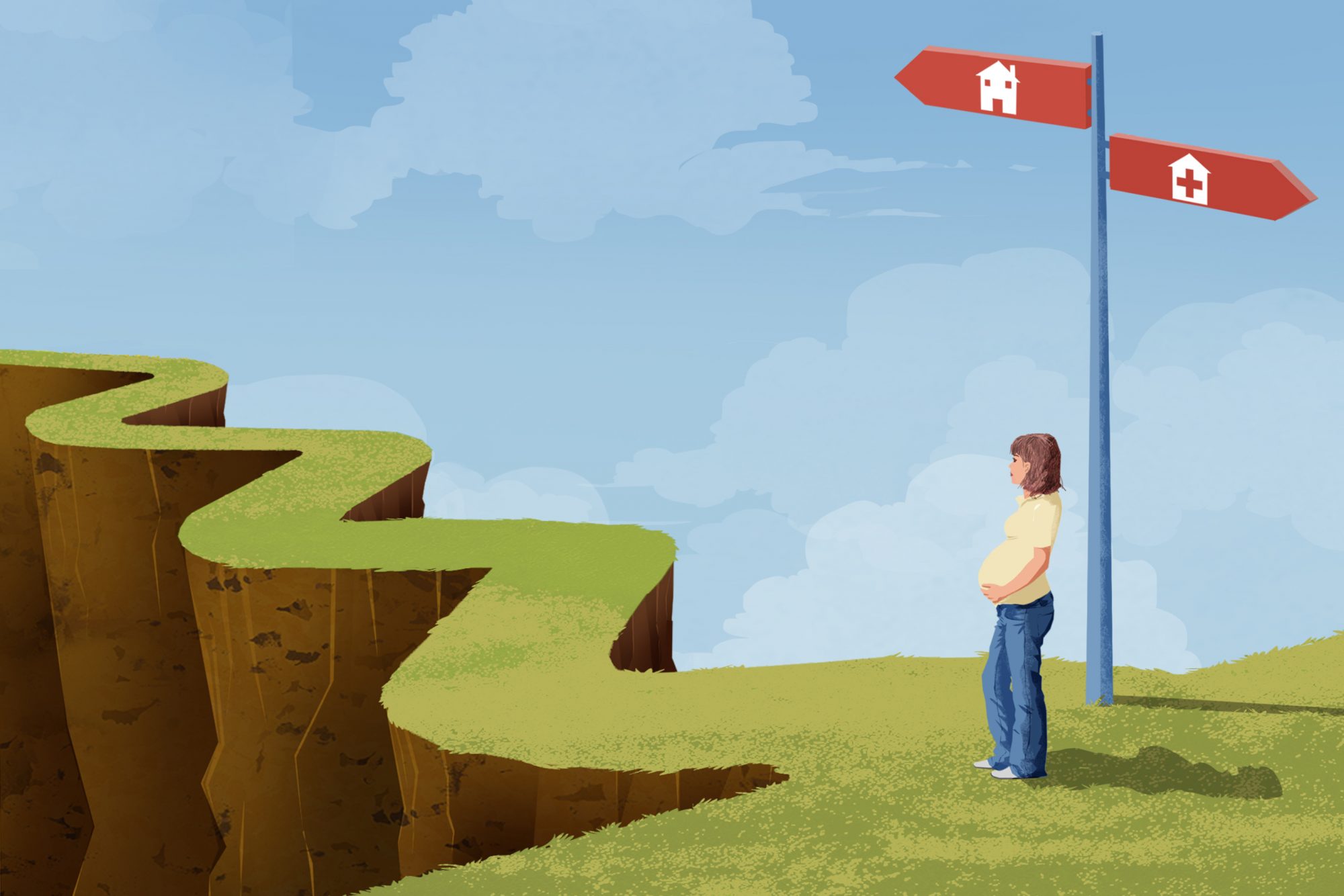
The trend toward non-hospital births has been rising steadily for years. According to the medical journal Birth, non-hospital births increased by 77 percent from 2004 to 2017. Social media is awash in pictures and videos of pregnant people laboring in inflatable pools in their living rooms, surrounded by loved ones and birth practitioners like midwives and doulas. But a second trend, one not so well-known or well-documented as home birth, is also taking hold: freebirth.
Freebirth, also referred to as unassisted birth, is just that, unassisted. Unlike traditional home births where an attending midwife is present to ensure everything with the birth is proceeding normally and who has the ability to detect any changes that may put the parent and child at risk, no medical personnel are present during labor and delivery in a freebirth.
Why the rise? For many pregnant people, hospital births have the potential to cause significant anxiety, either due to previous birth trauma, systemic racism and the Black maternal health crisis, or the risk of multiple birth interventions causing complications. Other pregnant people lack the resources to hire a medical professional to attend at home birth but want to avoid hospital births.
According to Talitha Phillips, labor and postpartum doula and CEO of Claris Health, many people who choose planned unassisted birth are “largely well-researched and educated women who are frustrated by not being seen and heard by their care providers but do not have the financial resources to hire an out-of-network care provider who can spend proper time with them or support the type of birth they desire.”
Add to these factors the fear associated with giving birth in a hospital during a global pandemic like COVID-19, and the expectation that unassisted births continue to rise makes sense. But it’s important to understand the risks and ensure that steps are taken to ensure the health of parent and child.
Here's what medical professionals and experts want all expecting parents to know about the freebirth trend.
The Risks of Unassisted Birth
The American Academy of Pediatrics does not recommend home births of any kind, assisted or unassisted, owing to the increased risk to the baby. But in May 2020, it updated guidelines to acknowledge that despite recommendations, people will still opt for in-home birth.
“We recognize that women have different reasons for planning a home delivery, such as cultural or religious beliefs—and right now, concerns over the coronavirus pandemic,” said Kristi L. Watterberg, M.D., FAAP, lead author of the AAP policy statement introducing the updated recommendations. “We are providing information for physicians to share with expectant parents to help them understand the factors that increase the risks of home birth and recommend standards for newborn care.”
With unassisted birth, the lack of medical oversight can put the pair in danger if problems arise and help isn’t close by. Problems associated with labor and delivery include hemorrhage, breech positioning, shoulder dystocia, umbilical cord problems, and a baby failing to breathe at birth. These aren’t necessarily commonplace but can life-threatening if encountered.
And keep in mind, doulas often opt not to attend planned freebirths due to the risks involved to both parent and child. Doulas are professionally trained and certified birth professionals who, in medical and home birth situations, advocate for and provide support to the individual in labor. Without having a doula in an unassisted birth situation, and only having people with no professional medical training or birthing certifications as a support team, it’s possible that early indications of risk-factors or emerging complications that could be prevented might be missed.
The AAP also cites research that found that the rise in home-based birth has resulted in a two- to three-fold increase in infant mortality in the United States. Dan Brennan, a Santa Barbara, California-based board certified pediatrician, explains that though the pandemic has changed some people’s plans for hospital delivery, it’s still important to keep safety in the forefront.
“Even with the presence of coronavirus, organizations such as the AAP still feel that hospitals and accredited birth centers remain the safest settings for births in the U.S.,” explains Dr. Brennan. “As communities face surges of coronavirus, more parents are weighing their delivery options. One thing to keep in mind is that medical resources in some areas may become limited. If a baby is born at home and requires immediate medical attention, one should consider how long it may take for first responders to arrive.”
Is Freebirthing Legal in the United States?
Unassisted childbirth is legal in every state in the United States and pregnant people are not required to give birth in hospitals or birthing centers. However, with the power to choose comes the responsibility of weighing risks and benefits and many birth professionals believe unassisted birth is a risk not worth taking.
There have also been cases where mothers are prosecuted, sometimes for murder, after delivering stillborn babies at home. While most of these cases are seen as wild government overreach and the policing of women’s bodies, it still holds relevance when deciding on where you would like to give birth.
How to Plan for a Safe Home Birth
Even though the risks are there, there are steps pregnant people can and should take to ensure their home birth is as safe as possible for both parent and baby. Even though neither the AAP nor the American College of Obstetricians and Gynecologists (ACOG) recommend planned home birth, Dr. Brennan explains that “they recognize that women may choose to plan a home birth. The AAP and ACOG recommend that midwives be certified by the American Midwifery Certification Board and meet the International Confederation of Midwives Global Standards for Midwifery Education.”
Planning your birth close to a hospital so that help is nearby if complications arise, instead of attempting to give birth an hour from the nearest medical facility is an important first step in the planning process. Also, taking classes in neonatal resuscitation prior to the birth event should be considered a primary point in preparing for an unassisted birth.
Understanding the stages of labor, what each feels like and indicates is also important. Being aware of how the body works during labor and what should be expected is a major step in prepping for an unassisted birth. Research and education are of paramount importance and ample resources are available online. Prenatal care with a nurse-midwife or OB are also not off the table even though you choose an unassisted birth. Seeing a certified medical professional over the course of the pregnancy is a vital step in ensuring the safety of everyone involved.





